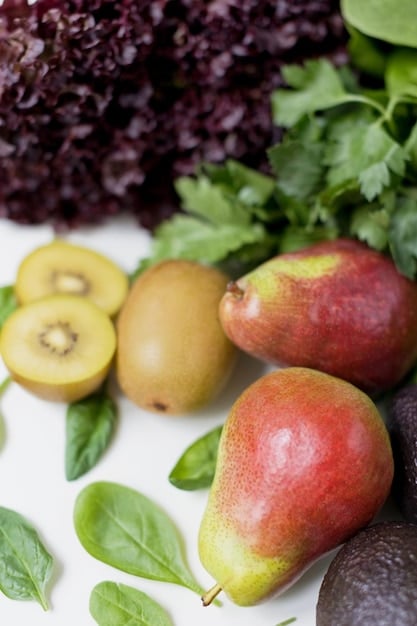US Agricultural Exports to Asia: Fastest-Growing Markets & Opportunities

US agricultural exports to Asia are experiencing significant growth, with key opportunities emerging in specific markets due to increasing demand for high-quality food products and evolving consumer preferences, thus presenting potential pathways for expansion.
The landscape of US agricultural exports to Asia is dynamic, presenting both challenges and opportunities for American producers. Understanding emerging market trends and identifying the fastest-growing sectors can be crucial for exporters looking to expand their presence and capitalize on increasing demand.
Navigating the Asian Agricultural Export Landscape
Asia represents a significant market for US agricultural exports, driven by a growing population and increasing affluence. However, different Asian countries have unique demands, regulations, and competitive landscapes.
Key Considerations for US Exporters
Successfully navigating the Asian agricultural export landscape requires careful consideration of several factors. Understanding these nuances is essential for developing effective market entry strategies.
- Consumer Preferences: Asian consumers have diverse tastes and preferences regarding food products. Market research is crucial to identify specific demands.
- Regulatory Compliance: Each country has its own set of import regulations and standards for agricultural products. Compliance is essential for smooth market access.
- Competitive Landscape: US exporters face competition from domestic producers and other international suppliers. Differentiating products based on quality and value is important.
By addressing these considerations, US exporters can position themselves for success in the diverse and dynamic Asian market.

Identifying High-Growth Markets in Asia
While the Asian market is broadly attractive, certain countries and regions are experiencing particularly rapid growth in demand for agricultural imports. Identifying these high-growth markets is crucial for prioritizing export efforts.
China: A Dominant Force
China remains the largest importer of US agricultural products in Asia, with significant demand for soybeans, corn, and meat products. Monitor policy changes and trade agreements to navigate this complex market.
Emerging Southeast Asian Markets
Countries like Vietnam, Indonesia, and the Philippines are experiencing rapid economic growth and increasing demand for high-quality food products. Rising incomes and changing dietary habits are driving growth in these markets.
India: A Market with Untapped Potential
India’s large population and growing middle class present significant opportunities for US agricultural exporters. However, navigating complex regulations and cultural preferences is essential for success.
Careful analysis of import data, economic indicators, and consumer trends can help identify the most promising high-growth markets in Asia for US agricultural exports.
Understanding Key Product Categories for Export
Not all agricultural products are created equal when it comes to export potential in Asia. Certain categories consistently demonstrate strong demand and favorable market conditions.
Demand for soybeans for animal feed production stays very high. Similarly, corn is used in different industries, but again, its importance in animal feed makes it very important in the market.
Exports of beef, pork, and poultry are also growing, due to the increasing demand for high-quality protein sources. Nuts and fruits are also a good product to export because of the increase in affluence and evolving dietary preferences where customers consume more of these products.

Addressing Trade Barriers and Regulatory Hurdles
Exporting agricultural products to Asia is not without its challenges. Trade barriers and regulatory hurdles can significantly impact market access and profitability for US exporters. It’s important to prepare and understand how to get past these difficulties.
Tariffs and Quotas
Tariffs and quotas imposed by Asian countries can increase the cost of US agricultural products, making them less competitive. Negotiating favorable trade agreements can help reduce these barriers, similarly, you must understand the local importing quotas in each of the countries you want to export to.
Sanitary and Phytosanitary (SPS) Measures
SPS measures, such as import restrictions based on plant and animal health concerns, can also impede trade. Compliance with these measures requires careful attention to detail and documentation.
Intellectual Property Protection
Protecting intellectual property rights is crucial for US exporters, particularly in markets where counterfeiting and infringement are prevalent. Proper registration and enforcement of trademarks and patents are essential.
Leveraging Technology to Enhance Export Efficiency
Technology can play a significant role in enhancing the efficiency and competitiveness of US agricultural exports to Asia. Technology can help a bunch, so you should really consider improving it if you haven’t.
- E-commerce Platforms: Online platforms can connect US exporters directly with Asian buyers, reducing reliance on traditional intermediaries and streamlining the sales process.
- Data Analytics: Analyzing market data and consumer trends can help exporters make informed decisions about product selection, pricing, and marketing strategies.
- Supply Chain Management Systems: Implementing robust supply chain management systems can improve traceability, reduce waste, and ensure the timely delivery of products.
Adopting these technologies can help US agriculture exporters optimize their operations, reduce costs, and improve their overall competitiveness in the Asian market.
Building Strong Relationships with Asian Partners
Successful exporting to Asia often hinges on building strong, long-term relationships with local partners. These partnerships can provide valuable insights into market dynamics and customer preferences.
Identifying Reliable Distributors and Agents
Selecting reputable distributors and agents with established networks and local expertise is crucial for effective market penetration. Do you know someone in the area? That could be a good start.
Establishing Trust and Cultural Understanding
Building trust and demonstrating cultural sensitivity are essential for fostering strong relationships with Asian partners. Understanding local customs and business practices can go a long way.
Collaborating on Marketing and Promotion
Collaborating with local partners on marketing and promotion campaigns can help tailor messaging to specific cultural contexts and maximize reach within the target market.
By prioritizing relationship building and demonstrating a commitment to long-term partnerships, US exporters can foster mutually beneficial collaborations that drive success in the Asian market.
| Key Point | Brief Description |
|---|---|
| 🌱 Market Research | Understanding consumer preferences is a must. |
| 📜 Regulatory Compliance | Adhering to import rules ensures smooth access. |
| 🤝 Partnerships | Building ties helps in market navigation. |
| 📈 Tech Use | Boosts supply chains and competitiveness. |
Frequently Asked Questions
▼
China, Vietnam, Indonesia, and the Philippines are key high-growth markets, spurred by economic development and rising demand for quality food products.
▼
Challenges include tariffs, quotas, regulatory compliance, and competition from local and international suppliers, necessitating careful planning and strategy.
▼
E-commerce, data analytics, and supply chain management systems optimize operations and reduce costs, thus enhancing competitiveness and market access.
▼
Soybeans, corn, meat products, nuts, and fruits show strong demand because of changing diets and increased consumer spending.
▼
Local partners offer key insights, cultural understanding, and marketing collaboration, which are essential for long-term success in diverse Asian markets.
Conclusion
The potential for US agricultural exports to Asia is undeniable, but realizing this potential requires a strategic and informed approach. By identifying high-growth markets, understanding key product categories, addressing trade barriers, leveraging technology, and building strong relationships with local partners, US exporters can capitalize on the growing demand for high-quality agricultural products in Asia.





